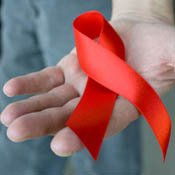Thursday, December 1, 2011
People who weren't yet born when AIDS first emerged are at the highest risk for becoming HIV positive today. It's an alarming development that underscores how essential awareness is, especially as we observe World AIDS Day Dec. 1.
From 2006 to 2009, the CDC reported that the HIV incidence rate for Americans between 13 and 29 years old increased by about 21 percent. In fact, most new HIV infections reported in this country involve people under 30.
Americans under 30 have never known a world without AIDS. At the same time, they've never really known a time when effective treatment for HIV and AIDS wasn't available.
This hasn't always been the case. As the disease turns 30, we need to ensure that people--especially younger people--remain aware of AIDS and how to prevent it.
AIDS awareness is one of the biggest challenges we face when trying to prevent it. After 30 years of addressing what was once considered one of America's most pressing health problems, AIDS is no longer front-page news.
On this World AIDS Day, let's not forget that about 56,000 Americans become infected with HIV each year, as the CDC reports, and that more than 14,000 Americans with AIDS die each year.
Thanks to more effective and more available treatments, Americans who have HIV and AIDS are able to live. The CDC estimates this number at more than 1 million nationwide.
Regularly testing people most at risk for HIV--and then providing antiretroviral drugs for HIV/AIDS patient--dramatically reduces the number of new infections.
Preventing HIV is not complicated. If you're sexually active, get tested. Don't use IV drugs or share needles. Abstain or practice safer sex. With preventive care, patients and their health-care providers can fight and manage this disease and slow its spread.
But we can't allow today's more effective treatments to make us complacent or ambivalent, or to lessen our resolve to find a cure.
To learn more or to find a place near you to get tested, visit http://www.actagainstaids.org or the Mississippi State Department of Health website.
